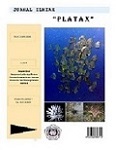Acquisition of Tidal Measurement Data in The Waters Around Bitung City For Predictional Purposes
Akuisisi Data Pengukuran Pasang Surut di Perairan Sekitar Kota Bitung Untuk Keperluan Prediksi
DOI:
https://doi.org/10.35800/jip.v11i2.48800Keywords:
Tidal prediction;, Tidal constants;, Tidal amplitude;, Mean sea level;Abstract
The existence of the waters around the city of Bitung with all its intensive utilization makes information regarding tidal conditions very important to continue to study. In the waters around Bitung City, there are two tidal measurement stations, the BMKG station, and the IOC station. This research was conducted to analyze the accuracy of tide prediction results based on measurement data at two tide stations located in the waters around Bitung City. The research was conducted by applying the least squares method to calculate the amplitude and phase of the tidal harmonic constants, followed by predicting tidal data. The result was that the most accurate predictions were obtained through a study of tidal data from IOC measurement stations in March–April 2021 with an average deviation of 4.35 cm. However, tide predictions using BMKG measurement station data are more consistent with an average deviation of ± 5 cm, compared to the average deviation of tide predictions from IOC measuring stations which vary from 4.35 – 27.67 cm.
Keywords: Tidal prediction, Tidal constants, Tidal amplitude, Mean sea level
Abstrak
Keberadaan perairan sekitar Kota Bitung dengan semua pemanfaatan intensifnya menyebabkan informasi menyangkut kondisi pasang surut sangat penting untuk terus dikaji. Di perairan sekitar Kota Bitung terdapat dua stasiun pengukuran pasang surut, yaitu stasiun BMKG dan stasiun IOC. Penelitian ini dilakukan dengan tujuan menganalisis akurasi hasil prediksi pasut berdasarkan data hasil pengukuran di dua stasiun pasut yang berlokasi di perairan sekitar Kota Bitung. Penelitian dilakukan dengan menerapkan metode kuadrat terkecil untuk menghitung amplitudo dan fase konstanta harmonik pasang surut, dilanjutkan dengan melakukan prediksi data pasut. Hasilnya diperoleh bahwa prediksi yang paling akurat diperoleh melalui kajian data pasut stasiun pengukuran IOC pada bulan Maret–April 2021 dengan deviasi rata-rata sebesar 4,35 cm. Walaupun demikian prediksi pasut menggunakan data stasiun pengukuran BMKG lebih konsisten dengan deviasi rata-rata ± 5 cm, dibandingkan dengan deviasi rata-rata prediksi pasut stasiun pengukuran IOC yang bervariasi dari 4,35 – 27,67 cm.
Kata Kunci : Prediksi pasut, Konstanta pasut, Amplitudo pasut, Duduk tengah muka laut
References
Bawangun, Y.W., R. Djamaluddin, dan H.W.K Manengkey. 2013. Identifikasi Perkembangan Gisik di Sekitar Pelabuhan Manado dan Sungai Tondano. Jurnal Pesisir dan Laut Tropis. 1(1): 21-27. FPIK Unsrat. Manado.
Garrison, T. 2009. Essentials of Oceano-graphy, Fifth Edition. Brooks/Cole Cengage Learning. USA. p. 463.
Haryoko, U. 2014. Kendali Mutu Data Cuaca dan Iklim. Pusat Penelitian dan Pengembangan Badan Mete-orologi Klimatologi dan Geofisika (BMKG). Jakarta. 167 hal.
Menn, L.M. 2012. Instrumentation and Metrology in Oceanography. John Wiley & Sons. USA. p. 399.
Muller, P. and H.V Storch. 2004. Computer Modelling in Atmospheric and Oceanic Science. Springer. New York. p. 312.
Nybakken, J.W. 1992. Biologi Laut suatu pendekatan ekologis. PT Grame-dia. Jakarta. 445 hal.
Pinet, P.R. 2009. Invitation to Oceanogra-phy, Fifth Edition. Jones and Bartlett. USA. p. 609.
Rampengan, R.M., 2013. Amplitudo Kons-tanta Pasang Surut M2, S2, K1, dan O1 di Perairan Sekitar Kota Bitung Sulawesi Utara. Jurnal Ilmiah Platax. 1(3): 118 – 124.
Spiegel, M.R and J.L Stephens. 1999. Schaum’s Outline of Theory and Problems of Statistics, Third Edition. McGraw-Hill. New York. p. 549.
Steacy, D.H. 2006. Understanding Tides. U.S Department Of Commerce. NOAA. p. 82.
Stewart, R.H. 2008. Introduction to Physical Oceanography. Departe-men of Oceanography Texas A & M University. USA. p. 358.
Stive, M.J.F. and Z.B. Wang. 2003. Morphodynamic Modelling of Tidal Basin and Coastal Inlets. In : Advances in Coastal Modeling. Edited by : V.C. Lakhan. Elsevier Oceanography Series, 67. Elsevier Science B.V. All Right Reserved. Amsterdam, The Netherlands. pp. 367 – 392.
Sulaiman, A. dan I. Soehardi. 2008. Pendahuluan Geomorfologi Pantai Kuantitatif. BPPT. Jakarta. 265 hal.
Talley, L.D, G.L. Pickard, W.J. Emery, and J.H. Swift, 2011. Descriptive Physi-cal Oceanography: An Introduction, Sixth Edition. Elsevier Ltd. USA. p. 543.
Triatmodjo, B. 1999. Teknik Pantai. Beta Offset. Yogyakarta. 362 hal.
UNESCO, 1985. Manual on Sea Level Measurement and Interpretation. Vol. I - Basic Procedures. Intergo-vernmental Oceanographic Com-mission. p.75.
________, 2006. Manual on Sea Level Measurement and Interpretation. Vol. IV. JCOM Technical Report No. 31. Intergovernmental Oceano-graphic Commission. p. 80.
Yanagi, T., 1999. Coastal Oceanography. Terra Scientific Publishing Com-pany (TERRAPUB)/Kluver Acade-mic Publisher. Japan. p. 162.
Downloads
Published
How to Cite
Issue
Section
License
Copyright (c) 2023 Vanessa Wuwung, Royke M. Rampengan, Hermanto W.K. Manengkey, Robert. A. Bara, Rignolda Djamaaludin, Fitje Losung

This work is licensed under a Creative Commons Attribution-NonCommercial 4.0 International License.
COPYRIGHT
Authors who publish with this journal agree to the following terms:
Authors hold their copyright and grant this journal the privilege of first publication, with the work simultaneously licensed under a Creative Commons Attribution License that permits others to impart the work with an acknowledgment of the work's origin and initial publication by this journal.
Authors can enter into separate or additional contractual arrangements for the non-exclusive distribution of the journal's published version of the work (for example, post it to an institutional repository or publish it in a book), with an acknowledgment of its underlying publication in this journal.
Authors are permitted and encouraged to post their work online (for example, in institutional repositories or on their website) as it can lead to productive exchanges, as well as earlier and greater citation of the published work (See The Effect of Open Access).






































